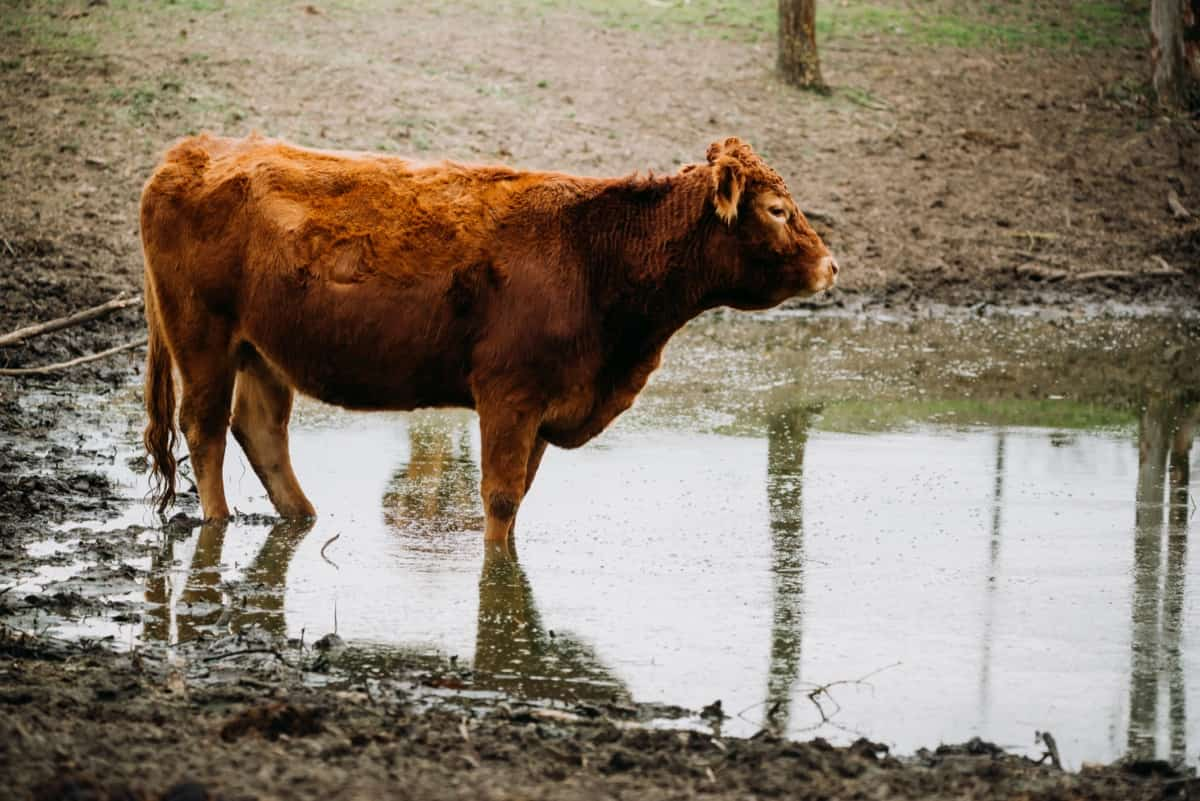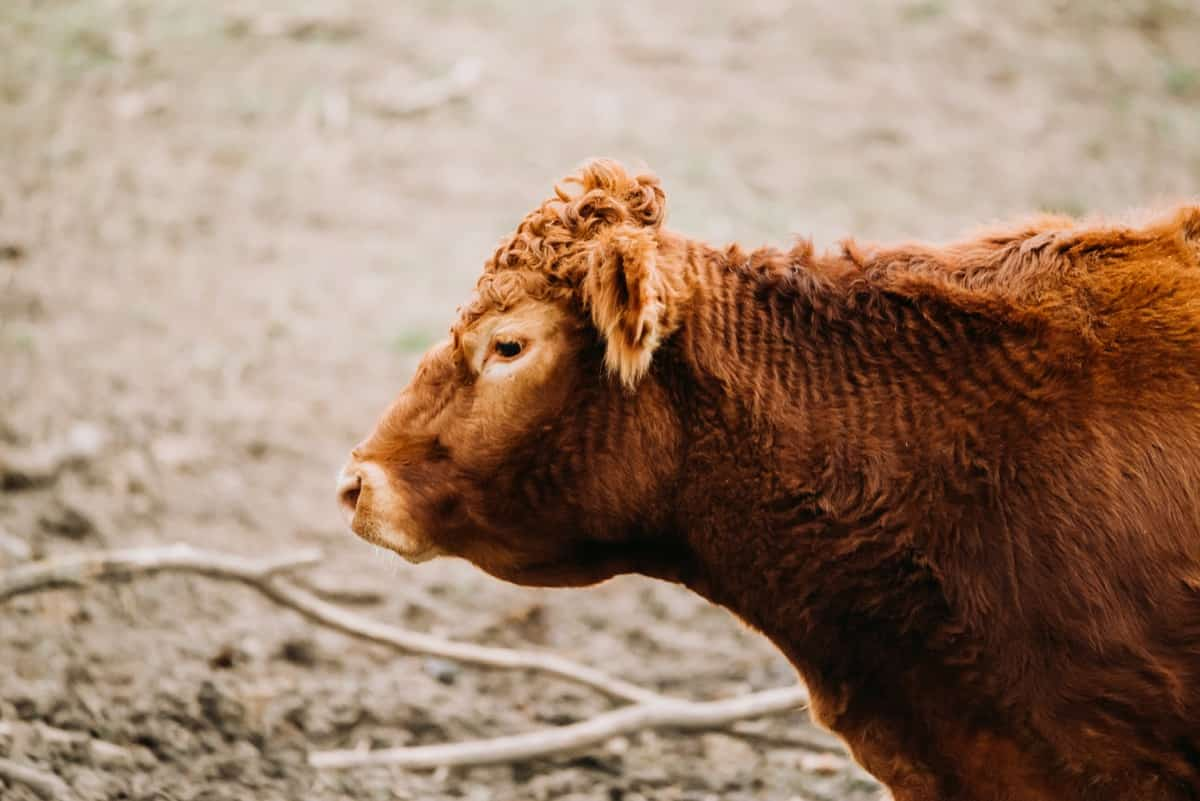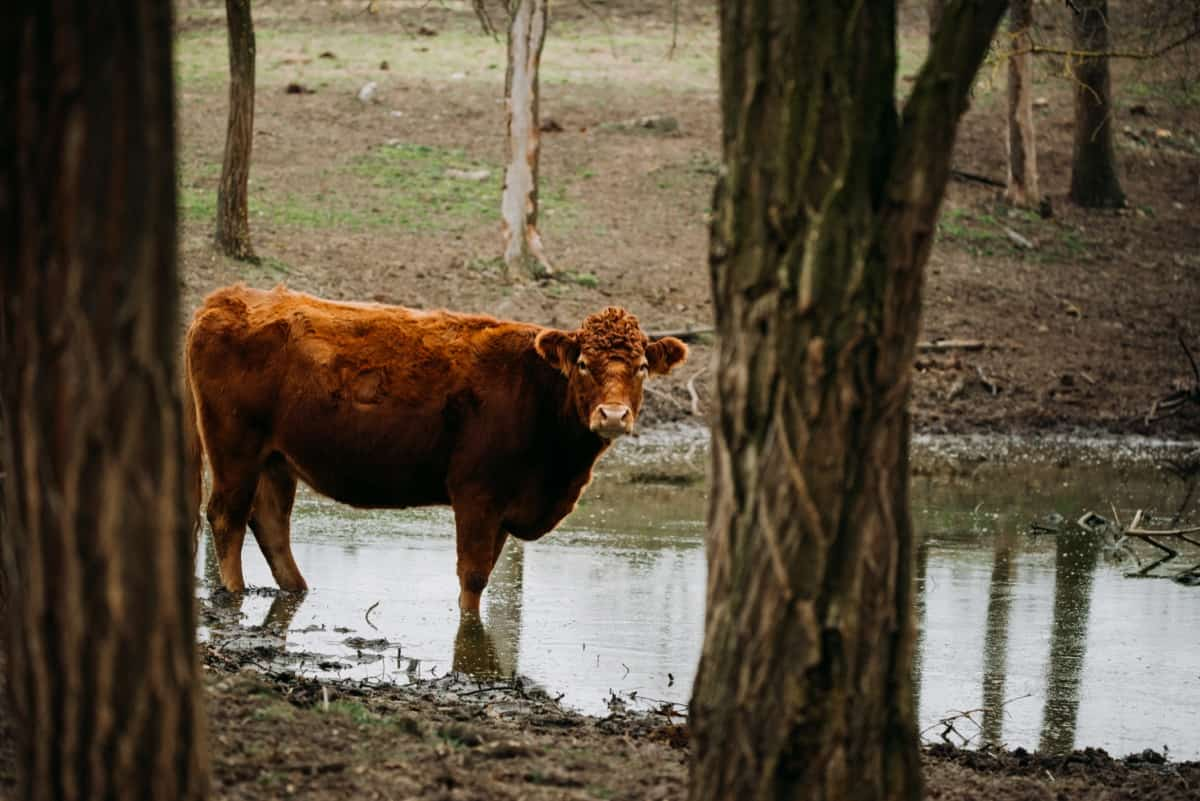In the vast landscape of cattle breeds, Limousin cattle stand out for their rich reddish-gold hue and their historical significance and contribution to the beef industry. As we venture into the story of this prominent breed, questions surface about their origin, physical characteristics, temperament, and more.

“Are Limousin cattle polled or horned?”, “What is the appearance of Limousin cattle?” and “What are the cons of Limousin cattle?”. In the ensuing sections, these questions, among others, will be thoroughly addressed, providing a holistic view of Limousin cattle and their esteemed standing in cattle farming.
The Origin and History of Limousin Cattle Breed
Tracing the history of Limousin cattle, one is transported to the scenic Limousin region of France, a land that bestowed upon these cattle not just their name but also their early purpose. In their infancy as a breed, these cattle were predominantly employed for draught work, capitalizing on their strong physique to pull heavy loads.
Yet, it wasn’t long before their pronounced muscle development and impressive size marked them prime candidates for meat production, a role they would dominate in subsequent years. As the breed’s reputation grew, so did its global footprint, with Limousin cattle being introduced to various regions, each time establishing themselves as a premier choice for beef.
Characteristics of Limousin Cattle: Limousin Cattle Description and Appearance
Moving to the physical realm, the Limousin cattle’s description paints a picture of strength and beauty. Their signature reddish-gold coat varies in shade, from pale gold to a deeper, almost mahogany hue. But color aside, their size and stature often capture attention. Limousin cattle in height and weight belong to the medium to large bracket of cattle breeds.
Bulls typically weigh between 2,300 to 2,700 pounds, while cows generally range from 1,600 to 2,000 pounds. Their frame, muscular and commanding, is surprisingly complemented by a fine bone structure, juxtaposing raw power with a hint of elegance.
The Temperament of Limousin Cattle: Docile and Easy to Handle
However, beneath this imposing exterior lies a surprisingly gentle temperament. Limousin cattle, for all their might, are characterized by a docile nature, making them a pleasure to handle for breeders and farmers alike. Their compliant disposition and impressive physical traits form a blend that has cemented their widespread popularity and adoption.
Pros of Raising Limousin Cattle: High Meat Yield and Feed Efficiency
Their reputation in beef farming circles is further bolstered by the tangible benefits they offer. The pros of raising Limousin cattle are hard to ignore. Foremost among these is their meat yield, consistently outstripping many other breeds in terms of carcass dressing percentage. Their prowess doesn’t end there.
In case you missed it: Brangus Cattle Price, Physical Characteristics, Advantages, and Management

Limousin cattle exhibit commendable feed efficiency, reflecting their ability to rapidly convert feed into muscle. The result? Beef that is not just abundant but leaner and lower in fat and cholesterol, catering to the demands of a health-conscious consumer base.
Cons of Raising Limousin Cattle: Limited Milk Production and Calving Difficulties
Yet, like all entities, Limousin cattle have their vulnerabilities. Addressing the topic of Limousin cattle disadvantages, two issues emerge at the forefront. The first pertains to milk production. Limousin cows, compared to other breeds, have a somewhat limited milk production capability, potentially influencing calf growth rates. The second challenge revolves around calving. The breed’s muscular build, an asset in many respects, can be a liability during birthing, leading to calving difficulties, especially pronounced in first-time heifers.
Limousin Cattle Price
On the economic front, Limousin cattle, like all commodities, are subject to price fluctuations based on many factors, including age, gender, and lineage. Nonetheless, a general pricing overview reveals that Limousin bulls can be acquired for prices ranging from $2,500 to $5,000. Their female counterparts usually command prices between $1,500 to $3,000. It’s pivotal to acknowledge the dynamic nature of these figures, influenced by both macroeconomic conditions and breed-specific factors.
Limousin Cattle’s Adaptability to Various Climates and Environments
Beyond economics, another facet of Limousin cattle that warrants attention is their adaptability. These cattle, originating from the temperate climes of France, have demonstrated an uncanny ability to acclimatize to diverse environments. Whether it’s the cool embrace of Northern Europe or the warmth of regions such as Australia and South America, Limousin cattle have showcased resilience and capacity to flourish. Their adaptability is underpinned by their thick skin and dense coat, shielding them from colder weather and an innate robustness that serves them well in warmer terrains.
The Role of Limousin Cattle in the Beef Industry: Superior Carcass Traits
In the grand arena of the beef industry, Limousin cattle have staked their claim, not just as participants but as leaders. Their elevated status can be attributed to their superior carcass traits. The beef derived from Limousin cattle is distinguished by its high muscle content, reduced fat levels, and textured and flavorful overall quality. These attributes have positioned them as a breed of choice for those seeking premium beef.
Limousin Cattle’s Contribution to Crossbreeding Programs: Improving Herd Performance
Yet, their impact isn’t confined to pure breeding. Limousin cattle, when introduced into crossbreeding programs, have left an indelible mark, driving herd performance to new heights. Their dominant genes, responsible for growth rates, feed efficiency, and meat yield, are often transferred to crossbred progeny, uplifting the genetic quality of the entire herd.
In case you missed it: Top 10 Common Mistakes to Avoid in Cattle Farming

Disease Resistance in Limousin Cattle: a Hardy Breed
Disease resistance, often an overshadowed trait, is another feather in the Limousin cattle’s cap. Historically, this breed has exhibited a reduced susceptibility to many common cattle ailments, a testament to their robust immune systems. When coupled with sound management practices, this hardiness ensures that Limousin cattle remain a healthy and productive choice for breeders.
Limousin Cattle Horned or Polled?
Addressing one of the most frequent queries about this breed, “Are Limousin cattle polled or horned?”: Historically, the breed was horned, a trait consistent with many European cattle breeds. Yet, as breeding practices evolved, emphasizing safety and ease of handling, a shift towards polled Limousin cattle emerged. Today, both horned and polled Limousin cattle can be found, with the latter seeing a surge in popularity owing to their operational efficiencies.
In case you missed it: Feeding Corn to Cattle: A Step-By-Step Guide

Conclusion
Limousin cattle, with their intricate tapestry of history, traits, advantages, and challenges, stand as a testament to the evolving narrative of cattle farming. Their continued relevance and prominence reflect their intrinsic value, promising them a place of honor in the annals of cattle breeding.
- Feed Your Flock for Less: Top 10 Tips to Save on Chicken Feed
- Ultimate Guide to Ossabaw Island Hog: Breeding, Raising, Diet, and Care
- Hatching Answers: The Top 10 Reasons Your Chickens Aren’t Laying Eggs
- Eggs and Economics: Breaking Down the Cost of Raising Backyard Chickens
- Defend Your Greens: Proven Methods to Keep Iguanas Out of Your Garden
- Ultimate Guide to Cinnamon Queen Chicken: A Comprehensive Guide for Beginners
- Ultimate Guide to California Tan Chicken: Breeding, Raising, Diet, Egg-Production and Care
- Ultimate Guide to Marsh Daisy Chicken: Breeding, Raising, Diet, and Care
- 10 Types of Chicken Farming Businesses You Can Start for Profits